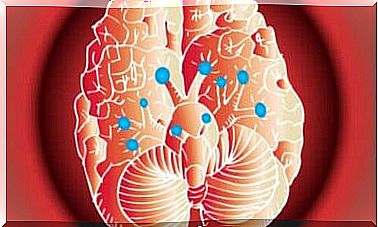The Importance Of Educational Incentives

Our education system must take educational incentives into account. To make education as high-quality as possible, we need an education system that helps students face tasks and overcome challenges. So, in order to provide quality education, we need to analyze these motivational aspects.
High interpersonal variability is the first element to consider when it comes to educational incentives. In other words, each student has different motives as well as different motivational processes. For this reason, there is no magic strategy to motivate all students equally.
In this article, we explain three aspects that we should not overlook when it comes to educational incentives. These aspects are interest, self-efficacy and goal orientation.
Interest-based educational incentives
How interested a student is in a school subject is an essential aspect. However, in many cases we tend to underestimate this aspect. We assume that what really matters is the effort students make to learn, along with their degree of resilience. However, this is a serious mistake.
If the content is boring and exhausting, the effort put in by the student will usually not be productive. On the other hand, if the subject is very interesting, the student will perceive his effort as something positive and satisfying.

When it comes to educational incentives, it’s important to look at interest from two perspectives. We can approach interest on an individual level or on a group level.
Individual interest is quite evident among students. When a school subject captivates a student, his performance will also be better. This is because interest encourages inquisitive behavior and constructive reasoning about the topic of interest.
However, group level is different. How do we manage to make a topic more interesting for a whole group? John Dewey argued that subjects don’t get any more interesting if we fill them with irrelevant details. To make a topic interesting, a teacher must help students understand its complexity.
People especially like to understand things. So problems arise when the material is not appropriate and the student cannot understand it because of this. When this happens, the information he learns is meaningless and uninteresting.
Educational incentives based on self-efficacy
Self-efficacy can be described as the expectation we have of, or the personal judgment we have about our ability to perform a task. In other words, it comes down to whether a person believes he is capable or not.
With this in mind, it is important not to confuse the concept of self-efficacy with self-confidence. Self-efficacy is a specific judgment about a specific task while self-confidence is a general idea of one’s own qualities and skills.
A high level of self-efficiency helps to make a student more motivated to learn and study. Often this is because being good about something makes people feel good about themselves. On the other hand, a low level of self-efficacy can be very demotivating.
Our brains act as a defense mechanism to maintain our self-confidence. Therefore, if a student is not good at something or does not have the right skills, he will lose interest in it.
Flaws in our education system
One of the biggest flaws in our education system is that we attach great importance to failure and competitively rewarding success. We must keep in mind that by punishing failure and making mistakes, we mainly emphasize the punishment itself. This can drastically reduce self-efficacy.
However, by rewarding success in a competitive way (“John got the best grade in class, you could all learn from him”), we can make the other students feel bad about themselves, which is another negative can affect their self-efficacy.
Therefore, the best way to promote self-efficacy is to emphasize the strengths of the students. In addition, we need to create tests that evaluate success based on personal improvement.
Educational incentives based on goal orientation
Goal orientation is the direction the student’s motivation takes. In other words, these are the reasons why the student develops his learning behavior. We have to keep in mind that the motivation process will change depending on these reasons.
We can distinguish three different goals:
- Performance Approach: In this category, the students who stand out are the students who try to get the best grades.
- Performance Avoidance: Here we can find the students who try not to be the worst or to avoid failing.
- Competence: Refers to students who seek to understand the subjects in depth in order to become competent in them.

However, our education system is also very lacking in this area. Students with achievement goals usually score better than others. This is because their motivation drives them to achieve their goal.
Competency-oriented goals, on the other hand, do not always go hand in hand with achieving the best grades. However, students with these goals tend to have a better understanding of topics.
So how come those who place the most value on understanding a subject don’t always get better grades? The answer lies in the fact that to get better grades under our current education system, it is easier to remember information mechanically than to understand it deeply.
Students who have performance goals quickly learn this principle. Those whose goals are focused on competence, on the other hand, have to put in extra effort.
Latest comments
As you can see, educational incentives are fundamental aspects that we must take into account to provide good education. However, it is not enough to teach subjects.
Motivation is not just about inspiring and arousing the interest of students. Rather, it means showing them that they are worthy and capable of achieving their goals and understanding various topics in depth.









